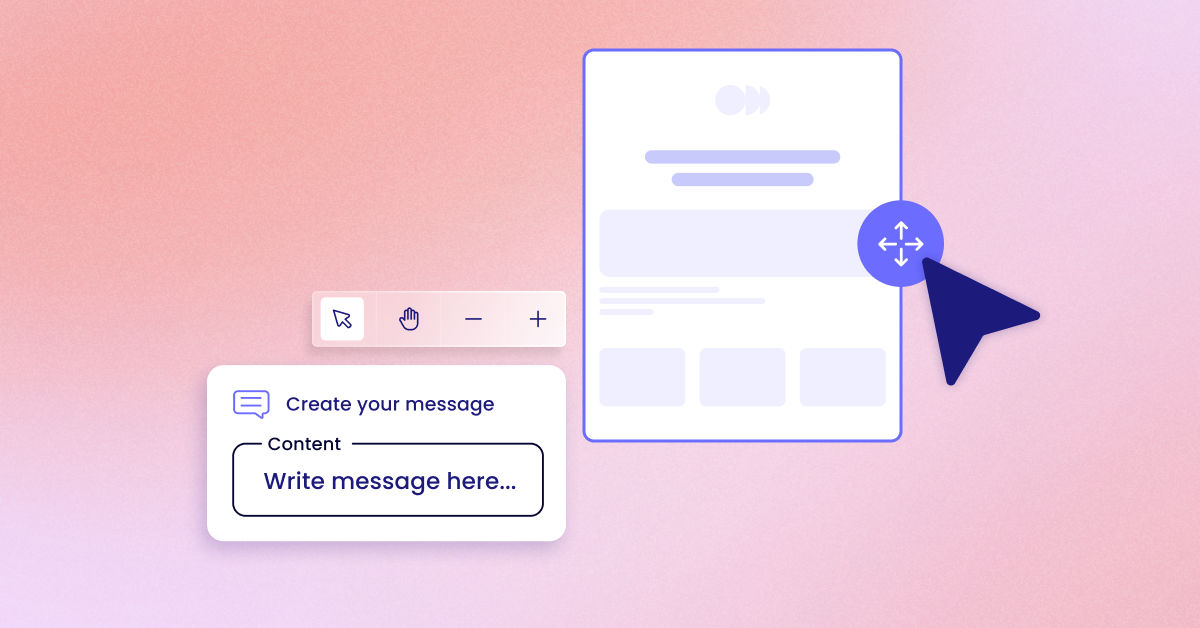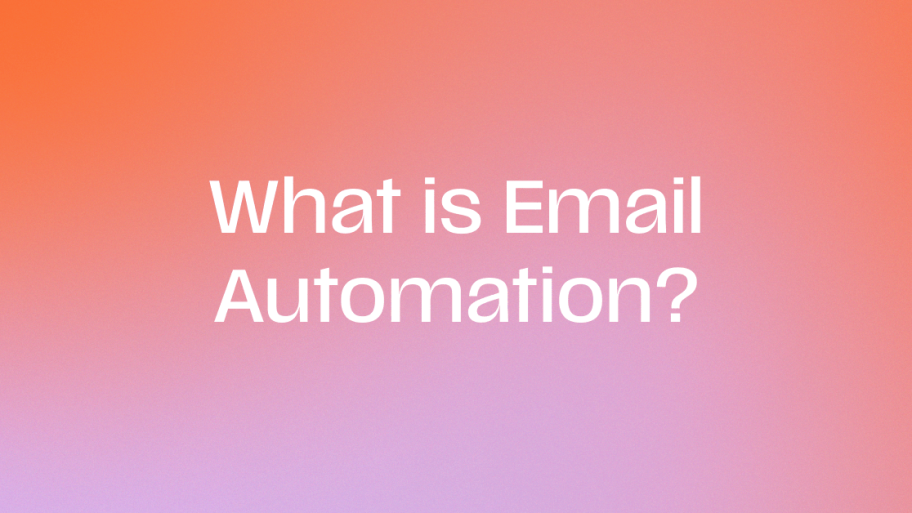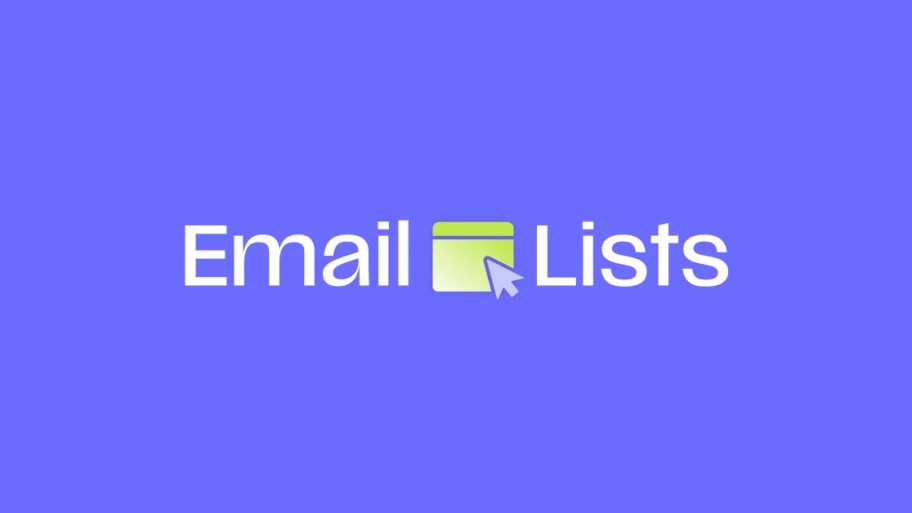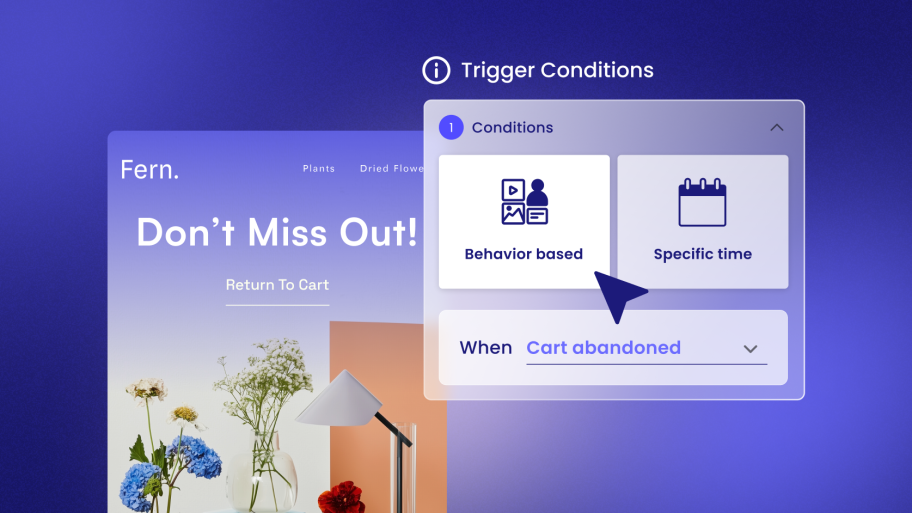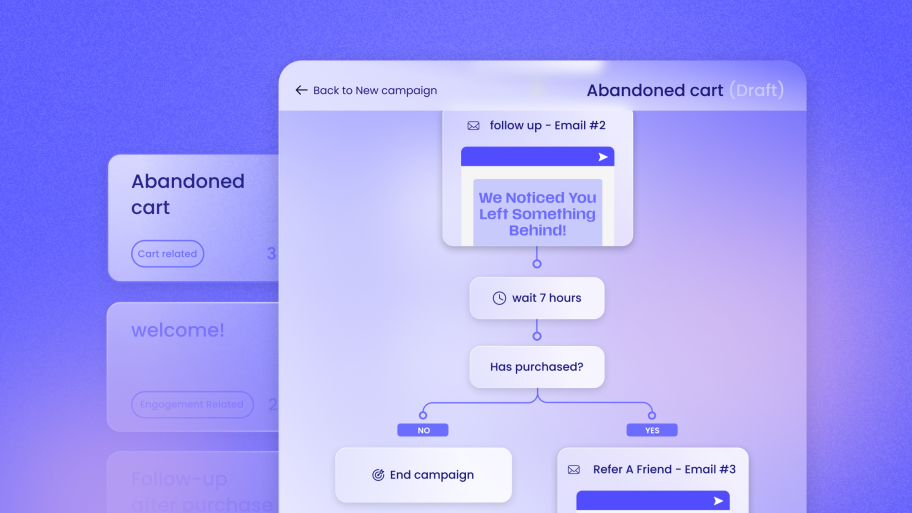This guide explores 10 diverse loyalty program examples to provide inspiration. We’ll break down different models and strategies, helping you find the right approach to turn your casual buyers into dedicated brand advocates and drive sustainable growth for your business.
What Is a Customer Loyalty Program?
So, what exactly is a customer loyalty program? At its heart, it’s a marketing strategy designed to encourage customers to continue shopping with or using the services of a business. It’s a structured way of rewarding people for their repeat business. But it’s about much more than just giving away free stuff. A truly effective loyalty program helps build a deeper, more meaningful connection between a brand and its customers.
Think of it as a framework for a relationship. In fact, research shows that 81% of consumers want to form a relationship with brands. A loyalty program provides the structure for that relationship to grow. It gives marketers levers they can pull to incentivize specific customer behaviors, reward ongoing patronage, and make customers feel genuinely valued.
The core idea is to increase a customer’s lifetime value (LTV) and foster retention. By offering perks—whether points, discounts, exclusive access, or special experiences—you give customers a compelling reason to choose you over a competitor. At the same time, these programs are a goldmine of data, providing invaluable insights into customer behavior that you can use to personalize their experience even further.
The Core Components of a Successful Loyalty Program
Before diving into specific examples, it’s helpful to understand the fundamental building blocks that make a loyalty program successful. While the rewards and structure may vary, the best programs share a few key characteristics. Getting these right is the foundation for turning a simple rewards system into a powerful engine for customer retention and growth.
A Clear Value Proposition
What’s in it for the customer? This question must have a clear and compelling answer. The value proposition is the promise of what members will receive in exchange for their loyalty. This could be a straightforward points-for-discounts system, early access to new products, free shipping, or exclusive content. Whatever it is, it needs to be easily understood and genuinely desirable to your target audience. If customers can’t see the benefit, they won’t bother to sign up.
Simplicity and Accessibility
Complexity is the enemy of engagement. If a program is difficult to understand, join, or use, participation will suffer. Customers should be able to grasp the rules quickly and track their progress effortlessly. This means no confusing jargon, no complicated earning structures, and no hoops to jump through to redeem rewards. The best programs are accessible and integrated into the natural shopping experience, making it feel easy and rewarding from the very first interaction.
Personalized Experiences
In today’s market, a one-size-fits-all approach just doesn’t cut it. Customers expect personalized interactions. A successful loyalty program leverages customer data to tailor the experience. This goes beyond simply using their first name in an email. It means offering rewards and communications based on their purchase history, Browse behavior, and stated preferences. For instance, a brand might use data from style quizzes to send curated product offers, making the customer feel understood and valued.
Emotional Connection
The most powerful loyalty programs move beyond purely transactional relationships. They work to build an emotional connection that makes customers feel like part of a community. True brand loyalty isn’t just about discounts; it’s about creating storylines and deeper reasons for customers to choose you. This can be achieved by aligning the program with shared values, creating exclusive content, or fostering a sense of belonging. When customers are emotionally invested, they are more likely to stick with a brand, even when not making a purchase.
Omnichannel Integration
Modern customers shop across multiple channels—online, in-store, and on social media. A great loyalty program meets them wherever they are. The experience should be seamless whether a customer is Browse on their phone while waiting in a physical store or making a purchase from their desktop at home.
Loyalty programs are an ideal tool to connect online and offline channels. This could involve allowing shoppers to earn points from an in-store purchase and redeem them online later, or using SMS to alert them of a new reward they can use on any channel.
10 Inspiring Loyalty Program Examples
Now that we understand the core components, let’s explore ten different types of loyalty programs. Each model offers a unique way to engage customers and foster loyalty. These examples can serve as a blueprint or a source of inspiration as you think about what might work best for your own business.
1. The Points-Based Program
This is the classic, most recognizable type of loyalty program. The concept is simple: customers earn points for certain actions, most commonly for making purchases. These points can then be redeemed for rewards, such as discounts, free products, or other perks.
- How it Works: For every dollar spent, a customer earns a set number of points. Once they accumulate enough points, they can trade them in for a reward. It’s a direct and easily understood value exchange.
- Why it Works: Its simplicity is its greatest strength. Customers can quickly grasp how to earn and redeem, which encourages participation. This model directly incentivizes the primary goal of most businesses: encouraging more spending.
- Implementation Tip: Keep the math simple. A system where 100 points equals $1 off is much easier for a customer to track than a more complex conversion rate. Displaying a customer’s point balance clearly on their account page and in email communications is also crucial for engagement.
2. The Tiered Program
Tiered programs take the points model a step further by creating levels of loyalty. Customers unlock new benefits as they spend more and ascend through the tiers. This adds an element of aspiration and gamification to the experience.
- How it Works: All members start at the entry-level tier. As they meet certain spending thresholds or accumulate points, they move up to higher tiers (e.g., Silver, Gold, Platinum). Each successive tier offers increasingly valuable rewards, such as better discounts, exclusive access to sales, or a dedicated customer service line.
- Why it Works: Tiers create a clear path for engagement and make customers feel recognized for their loyalty. The desire to reach the next level can be a powerful motivator, encouraging customers to consolidate their spending with one brand.
- Implementation Tip: Make the benefits of each tier clear and aspirational. A well-designed visual progress bar can be very effective in showing customers how close they are to reaching the next level, motivating them to make that next purchase.
3. The Paid/VIP Membership Program
With this model, customers pay a recurring fee (monthly or annually) to gain access to a suite of exclusive benefits. It shifts the focus from earning rewards through transactions to enjoying persistent value as part of a club.
- How it Works: Customers opt-in to a paid membership and immediately unlock benefits like free shipping on all orders, members-only pricing, or exclusive access to content and events. This model redefines a subscription as more of a
membership—a decision to belong to a group rather than just a billing arrangement. - Why it Works: A paid program creates a highly qualified and committed group of customers. Having paid a fee, these members are psychologically motivated to maximize the value of their membership, leading to more frequent purchases and higher engagement. It also provides the business with a predictable, recurring revenue stream.
- Implementation Tip: The value offered must clearly outweigh the cost of the membership fee. Benefits should be significant and not easily accessible to non-members. If 2021 was the year brands embraced subscriptions, 2022 was the year they perfected them by focusing on delivering an exceptional subscriber experience.
4. The Value-Based Program
This type of program connects with customers on a deeper, more emotional level by aligning with their personal values. Instead of just transactional rewards, the program supports a cause or initiative that the brand and its customers care about.
- How it Works: A portion of a purchase might be donated to a specific charity, or customers could be given the option to donate their loyalty points to a cause. Some programs reward customers for sustainable actions, like recycling product packaging or participating in community events.
- Why it Works: Today’s consumers are increasingly “conscious consumers” who want to support purpose-driven brands. A value-based program shows that a brand is committed to more than just profits, which can build powerful emotional loyalty. A recent survey found that 83% of consumers prefer to show support for companies by buying from them, a form of positive activism.
- Implementation Tip: Authenticity is everything. The cause you support must be a genuine fit for your brand identity. It’s no longer enough to just make claims; brands must take physical action to make a change.
5. The Referral Program
While sometimes seen as a separate marketing tactic, a referral program is a powerful form of loyalty program that rewards existing customers for bringing in new ones.
- How it Works: An existing customer receives a unique referral link or code to share with friends and family. When a new customer makes a purchase using that link, the original customer receives a reward, such as a discount, store credit, or bonus points.
- Why it Works: It leverages the most powerful form of marketing: word-of-mouth. People trust recommendations from friends far more than they trust traditional advertising. In fact, 83% of consumers trust “digital word of mouth” above content produced by a brand. This model can dramatically lower customer acquisition costs.
- Implementation Tip: Make the sharing process as easy as possible. Provide pre-written messages for email and social media, and ensure the reward is valuable enough to motivate customers to act. Many modern loyalty platforms offer built-in referral functionality to streamline this process.
6. The Gamified Program
Gamification applies game-like elements—such as challenges, badges, and leaderboards—to a non-game context to boost engagement. A gamified loyalty program makes the process of earning rewards more fun and interactive.
- How it Works: Customers might earn badges for completing certain “missions,” like writing a review, sharing a product on social media, or making a purchase from a new category. These challenges add a layer of fun and discovery to the shopping experience.
- Why it Works: It taps into our natural desire for achievement and competition. Completing challenges provides a sense of accomplishment, which strengthens the customer’s positive association with the brand. It’s an effective way to encourage behaviors beyond just spending money.
- Implementation Tip: The challenges should be achievable and aligned with your business goals. For example, if you want to increase user-generated content, create a challenge that rewards customers for submitting a photo review. Ensure the interface clearly displays the badges they’ve earned and the challenges that are still available.
7. The Community-Based Program
This program focuses less on transactional rewards and more on creating an exclusive community for its most loyal customers. The primary benefit is a sense of belonging and access to a group of like-minded people.
- How it Works: Membership might grant access to a private forum, a dedicated social media group, or invitations to exclusive events (both online and offline). The content within this community often includes sneak peeks of new products, Q&A sessions with the brand’s founders, and other insider experiences.
- Why it Works: It fosters deep emotional loyalty by making customers feel like insiders. Being part of an exclusive group creates a powerful sense of identity and connection to the brand that a simple discount never could.
- Implementation Tip: The community needs active management to thrive. A dedicated community manager should facilitate conversations, share exclusive content, and ensure the space remains positive and engaging.
8. The Hybrid Program
Why choose just one model? A hybrid program strategically combines elements from two or more different types of loyalty programs to create a richer, more multifaceted experience.
- How it Works: A program might use a tiered structure as its foundation but also incorporate a points system for redemptions within each tier. It could also include a referral component and occasional value-based campaigns, like a “double points for charity” weekend.
- Why it Works: A hybrid approach allows you to appeal to a wider range of customer motivations. Some customers are driven by discounts (points), others by status (tiers), and others by a sense of community. By offering multiple ways to engage, you increase the overall appeal and effectiveness of the program.
- Implementation Tip: Start with a simple foundation (like points or tiers) and gradually layer in additional elements. Be careful not to make the program too complex. The different components should feel complementary, not confusing.
9. The Educational Rewards Program
This innovative approach rewards customers for engaging with your brand’s content and learning more about your products or mission. It’s a great way to build a more informed and invested customer base.
- How it Works: Customers can earn points or small rewards for activities like watching a product tutorial video, reading a blog post about the brand’s sustainability practices, or completing a short quiz about a new product line.
- Why it Works: It encourages customers to understand the full value of what you offer, which can lead to higher satisfaction and better product usage. It also provides a low-friction way for customers to engage with your brand between purchases, keeping you top-of-mind.
- Implementation Tip: The content must be genuinely valuable and interesting. This is a great way to highlight unique product features or share your brand’s origin story. The rewards for these actions don’t have to be large; often, just a small token of appreciation is enough to encourage participation.
10. The Omnichannel Program
In today’s world, the line between online and offline shopping is increasingly blurred. An omnichannel loyalty program ensures a consistent and connected experience across all touchpoints.
- How it Works: The program seamlessly integrates a brand’s physical stores with its eCommerce site and mobile app. A customer can earn points for an in-store purchase and see them reflected in their online account instantly. They can redeem rewards earned online at a physical checkout, and vice versa. Over 50% of consumers plan to use a mix of in-store and online shopping channels.
- Why it Works: It provides the frictionless experience that modern consumers expect. By breaking down the silos between different channels, you create a unified brand experience that strengthens customer relationships and provides a more holistic view of their behavior.
- Implementation Tip: This requires a robust tech stack. Your point-of-sale (POS) system needs to integrate with your eCommerce platform and your loyalty program software. Investing in a WordPress-native communication toolkit can be a game-changer here, especially for businesses using WooCommerce, as it can unify data from various sources directly within the platform you already use.
How to Build Your Own Loyalty Program with a WordPress-Native Solution
Feeling inspired by these examples? The good news is that launching a sophisticated loyalty program is more accessible than ever, especially for businesses built on WordPress. Using a native solution can help you avoid many of the headaches associated with external platforms and create a seamless experience for both you and your customers.
Why a Native Tool Matters
Before we get into the steps, let’s talk about why choosing a WordPress-native tool is so important. When you try to piece together your marketing with non-native platforms, you often run into a host of problems. You might face confusing and fragmented interfaces , frustrating data syncing issues, or plugin conflicts that slow down your site.
A solution built from the ground up for WordPress and WooCommerce eliminates this friction. It offers a familiar UI, ensures compatibility, and consolidates your tools in one place. This is where a solution like Send by Elementor comes in. It’s an all-in-one communication toolkit designed specifically for this ecosystem, combining email, SMS, automation, and analytics right inside your WordPress dashboard.

Step 1: Define Your Goals and Rewards
First things first: what do you want to achieve? Your goals will determine the structure of your program. Are you trying to:
- Increase purchase frequency?
- Boost average order value?
- Encourage customer referrals?
- Gather more product reviews?
Once you have your goals, you can design rewards that incentivize those specific behaviors. For example, if your goal is to increase purchase frequency, a points-based system that rewards every purchase is a great choice. If you want more reviews, you could offer bonus points for every review submitted.
Step 2: Set Up Your Communication Toolkit
This is where you lay the technical foundation. With a native tool like Send by Elementor, this process is streamlined. You can use its Contact Management features to import and sync your customers from WooCommerce and other forms.
Next, you’ll use the powerful Audience Segmentation capabilities to group your contacts. You could create segments for:
- New customers (to enroll in the program)
- High-spending VIPs
- Customers who haven’t purchased in a while
- Members of different loyalty tiers
This targeting is essential for sending personalized and relevant communications about the program.
Step 3: Automate Your Communications
A loyalty program runs on communication. You need to keep your members informed about their status, new rewards, and exclusive offers. Manually managing this would be impossible, which is why Marketing Automation Flows are critical.
Using Send by Elementor, you can build automated workflows for every stage of the loyalty journey:
- Welcome Series: Create an automated email flow to welcome new members. Use the
Drag-and-Drop Email Builder and Ready-Made Templates to explain how the program works, highlight their initial benefits, and encourage their first action. - Reward Notifications: Set up an automation that sends an email or SMS message when a customer earns a new reward or reaches a new tier. A quick text saying, “Congrats! You’ve just unlocked free shipping on your next order,” can be incredibly effective.
- Points Balance Updates: Schedule a monthly automated email that summarizes a member’s points balance and shows them the rewards they are close to unlocking.
- Re-engagement Campaigns: Use segmentation to identify members who haven’t engaged in a while and send them a special offer to bring them back.
Step 4: Promote and Manage Your Program
Once your program is built, you need to get the word out. Use your email and SMS channels to announce the launch. Add information about the loyalty program to your website’s homepage, product pages, and checkout process.
For Web Creators, this is where you can provide tremendous ongoing value to your clients. You can manage the loyalty program as a monthly service, creating campaigns, monitoring results, and refining the strategy over time. This transforms your offering from one-off projects to long-term partnerships and creates a valuable recurring revenue stream.
Step 5: Track Performance and Demonstrate ROI
How do you know if your program is working? You need to track your results. One of the biggest advantages of a WordPress-native tool is the integrated analytics.
Send by Elementor provides Real-Time Analytics directly within the WordPress dashboard. You can track key metrics like:
- Program enrollment rate
- Reward redemption rate
- Purchase frequency of members vs. non-members
- Revenue attribution from loyalty-related campaigns
This makes it easy to see what’s working and what isn’t. For Web Creators, this clear data is essential for demonstrating ROI directly to clients, proving the value of the service you’re providing and justifying your ongoing management fee.
Conclusion
Customer loyalty programs are far more than just a way to offer discounts. As these 10 examples show, they are versatile, strategic tools for building deep and lasting customer relationships. From simple points-based systems to elaborate value-based communities, the right program can transform casual buyers into passionate advocates for your brand. The key is to choose an approach that aligns with your brand identity and offers genuine value to your customers.
Launching and managing a program might seem daunting, but with the right tools, it is well within reach for any business. Opting for a solution that integrates natively with your existing platform, especially for those in the WordPress ecosystem, can remove the technical barriers and streamline the entire process. By focusing on simplicity, personalization, and a strong emotional connection, you can create a loyalty program that not only drives revenue but also builds a thriving community around your brand.
